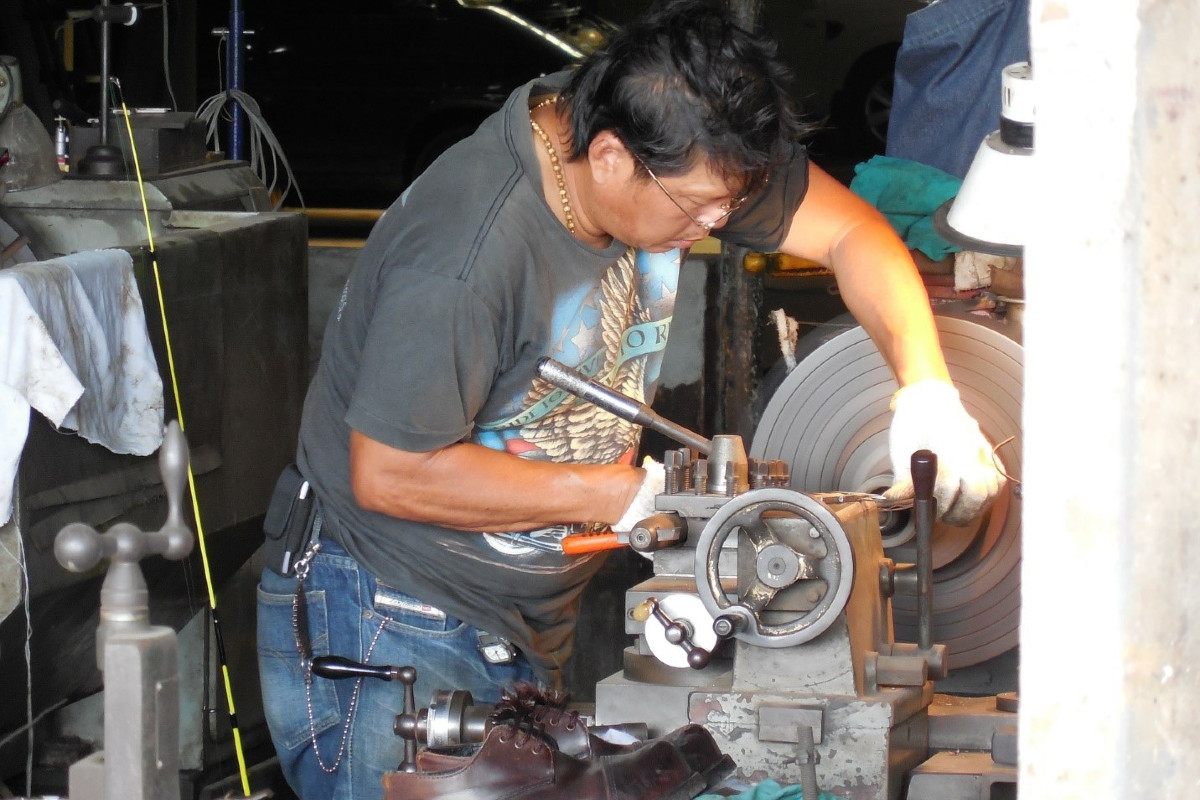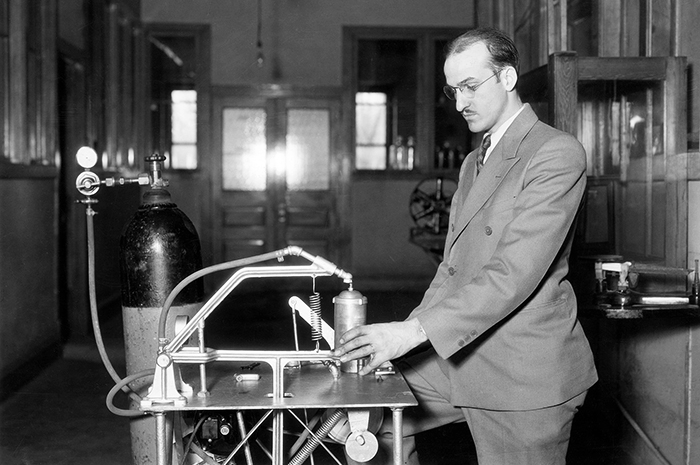- Details

Food waste is a serious issue facing our country that not everyone may be familiar with. According to the USDA, roughly 30-40% of the national food supply is wasted annually, which equates to nearly 133 billion pounds of food with a value of $161 billion. Yet in 2023, over 18 million households experienced food insecurity.
To help combat food waste and improve food accessibility, a team of three recent Illinois high school graduates from Plainfield North High School — Nicholas Powell, Hubert Stasik and Tharun Veeraiah, collectively known as Team Expiri — presented at the prestigious INCubatoredu National Pitch Competition held in Chicago in July.
- Details
 Illinois is the second in the nation in employment of machinist. Machinists are tradespeople that create precise parts from machining tools. Machinists are tasked with creating, repairing, or modifying objects that are usually made of metal.
Illinois is the second in the nation in employment of machinist. Machinists are tradespeople that create precise parts from machining tools. Machinists are tasked with creating, repairing, or modifying objects that are usually made of metal.
According to the U.S. Bureau of Labor Statistics, Illinois employs over 28,000 machinists, the only state that employees more is California. Illinois takes the lead in employment of machinists by area with Chicago, Naperville and Elgin having over 19,000 employees in the field. Rockford has the highest level of concentration of machinist jobs in the U.S.
Although they generally work with metals, they sometimes work with woods, glass, and plastics. When small parts are needed, machinists will manually set up the machine to make those pieces. For larger scale pieces Computer Numerically Controlled – or CNC – is used. CNC is equipment that is run by computers that cuts and shapes down metals to a desired size. While these pieces are being created the machinists pays close attention to it to make sure the machine is operating as expected. Once these pieces are cut down, they are inspected by engineers.
There are a variety of different types of machinists. There are machinists –known as production machinists – who specialize in a specific part. This machinist will produce large quantities of the same objects. Another common machinist is the automotive machinist, who operates on cars.
To become a machinist, one must have a high school diploma or GED. Once this is acquired, a person can learn how to be a machinist from a program through a trade school, apprenticeship, community college, or by getting an associate’s degree for it.
Machinists are essential workers who help people get the exact piece of equipment they need. Illinois is doing at a wonderful job at employing machinist and utilizing their services.
- Details
 Illinois is leading the Midwest, and is among the top ten states nationally, in business startups, according to recently-released data from the Business Formation Statistics Report.
Illinois is leading the Midwest, and is among the top ten states nationally, in business startups, according to recently-released data from the Business Formation Statistics Report.
The Business Formation Statistics are produced by the U.S. Census Bureau and a number of economists affiliated with other accredited federal agencies. BFS collects and presents accurate data concerning new emerging businesses and startup applications across the states. The Business Formation Statistics Report for Illinois reflected outstanding statistics in the year 2021. This agency began collecting information in 2004, and since then, it has recently documented Illinois as having its highest-ever number of business startups.
Within 2021, Illinois became the center of 198,827 business startups. From the start of the COVID-19 pandemic in 2019 to the end of 2021, there was a 69% increase in business startups and entrepreneurship. As a result, Illinois ranked first in the Midwest in respect to startup creation. According to the statistics, Illinois was rated as the leading Midwest state due to having more than 40,000 startups than its closest ranked state, Ohio.
In addition, Illinois was recognized as the sixth state for highest number of business startups in 2021. Illinois followed closely behind Florida, California, and Texas. Overall, on a national level, Illinois placed eighth in startup creation growth. The drastic 69% increase from 2019 to 2021 in entrepreneurship in Illinois is profoundly telling of its residents’ desire to propel forward and contribute to the replenishing of the economy. It is quite noteworthy to acknowledge Illinois’ placement as the largest state among the top ten leading states for startup growth in the United States.
- Details
 Grace Goudie, an Illinois native, advanced to the season finale of “Chopped” following her latest win in the competition. She will soon face-off against the remaining competitors to see who will take home the $25,000 cash prize.
Grace Goudie, an Illinois native, advanced to the season finale of “Chopped” following her latest win in the competition. She will soon face-off against the remaining competitors to see who will take home the $25,000 cash prize.
Goudie began her culinary journey as a teenager, waiting tables prior to studying journalism and food science at the University of Missouri. She attended the prestigious Culinary Institute in Napa, California, and participated in the Accelerated Culinary Arts Program. Following her graduation, she worked at a number of restaurants, then returned to the Chicago area.
Goudie later received the opportunity of a lifetime. She was hired by Thomas Keller, a chef known for his exceptionally high standards and accolades, to work in his restaurants as a sous chef at Ad Hoc and later at French Laundry, a three Michelin-starred restaurant.
Having to impress the renowned judges of “Chopped” is not the only challenge with which Goudie is familiar. Her participation was urged by her mother, who is currently fighting a battle with lymphoma, but despite having to beat out the contenders with an unconventional ingredient – fish heads – she was able to rise above the competition and put herself among the finalists.
Goudie is now an executive chef of the breakfast, lunch and dinner restaurant Scratchboard Kitchen in Arlington Heights, her first restaurant which she opened during the COVID-19 pandemic. At just 30 years old, she brings pride to cooks throughout Illinois by sharing her skills with the world on Facebook and YouTube. Her website features recipes and tutorial videos for chefs to try techniques and dishes from the comfort of their own home.
The season finale of “Chopped” will air Feb. 1 on the Food Network.
- Details
 Today is National Whipped Cream Day, and the sweet treat has its origins right here in Illinois. The cold has returned again, and hot drinks topped with whipped cream are a great way to keep warm. While the day falls on the birthday of the late Aaron “Bunny” Lapin, who founded “Reddi-wip”, true credit for one of the most popular dessert toppings goes to Charles Getz, who was a graduate student at the University of Illinois Urbana-Champaign during the Great Depression.
Today is National Whipped Cream Day, and the sweet treat has its origins right here in Illinois. The cold has returned again, and hot drinks topped with whipped cream are a great way to keep warm. While the day falls on the birthday of the late Aaron “Bunny” Lapin, who founded “Reddi-wip”, true credit for one of the most popular dessert toppings goes to Charles Getz, who was a graduate student at the University of Illinois Urbana-Champaign during the Great Depression.
Getz discovered that milk infused with pressurized carbon dioxide began to foam. At the time, Getz was conducting research on food preservation, but he quickly understood the potential of his discovery. Working in collaboration with Chemistry professor George Frederick Smith, Getz experimented with the foaming milk and determined that nitrous oxide was ideal for the process, as carbon dioxide created a bitter taste. From this process, portable whipped cream as we put on our desserts today was born.
Afterward, Getz patented the method, which George Frederick Smith, with help from his brothers, Allyne H. Smith and Clarence Smith, used to develop a product called Instantwhip, the first aerosol whipped cream, in 1933. The product proved successful in restaurants, ice cream shops, and soda fountains. Building off their success, the Smith brothers decided to found a larger business.
In 1934, Smith used Instantwhip whipped cream to launch the company Instantwhip Foods with his brothers in Ohio. They initially sold the whipped cream in cans that could be returned and refilled. They mostly sold their products to restaurants or ice-cream parlors. The company still exists today and sells many other products, including coffee creamer and yogurt under the name of Instantwhip Foods.
In 1948, Reddi-Wip would be founded by Aaron “Bunny” Lapin, who patented the specific spray nozzle and sold their product directly to consumers. Many attribute the invention of aerosol whipped cream to Lapin, even though Getz and Smith discovered the process in the 1930s. As you put whipped cream on your hot chocolate this cold January day, you can thank Charles Getz and his research at the University of Illinois Urbana-Champaign.



